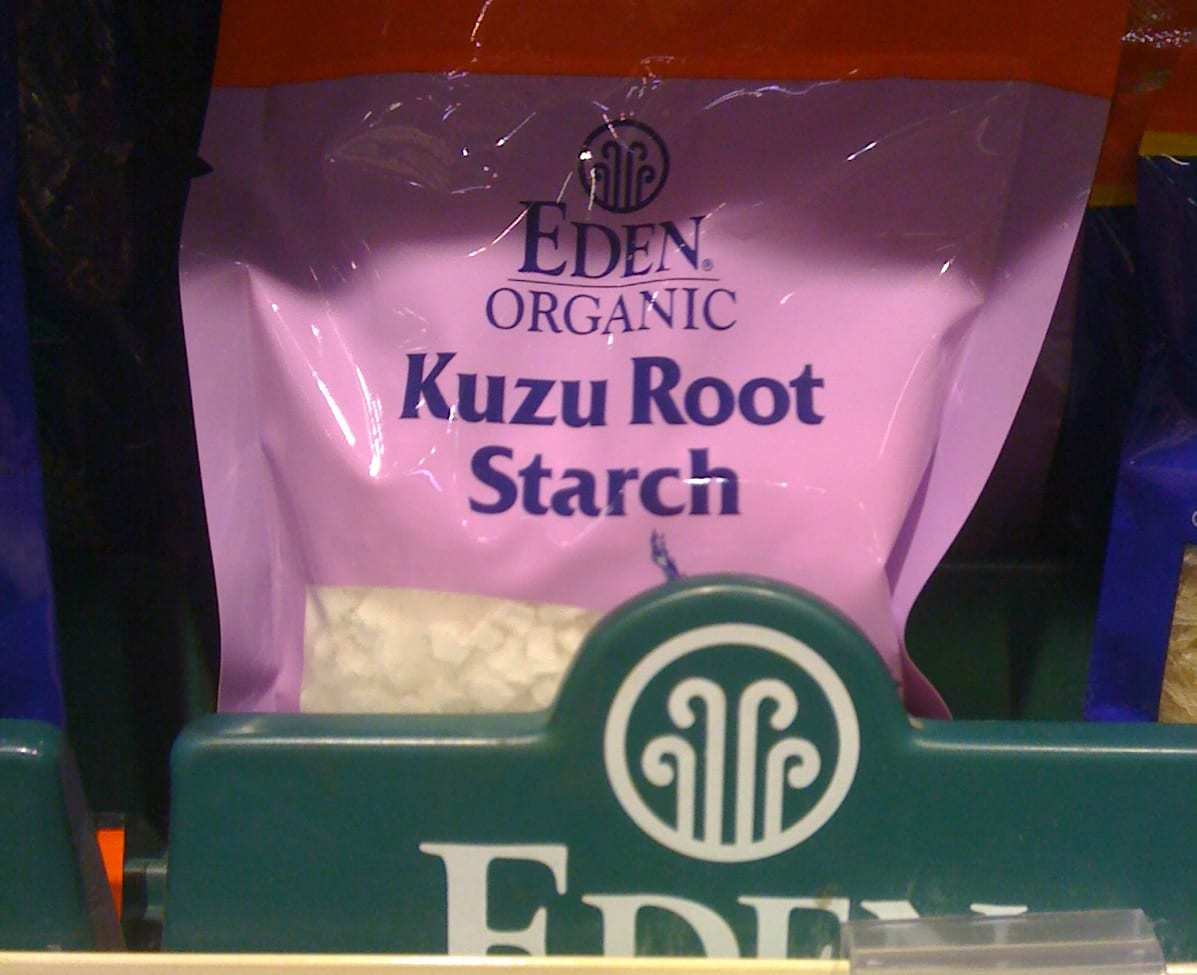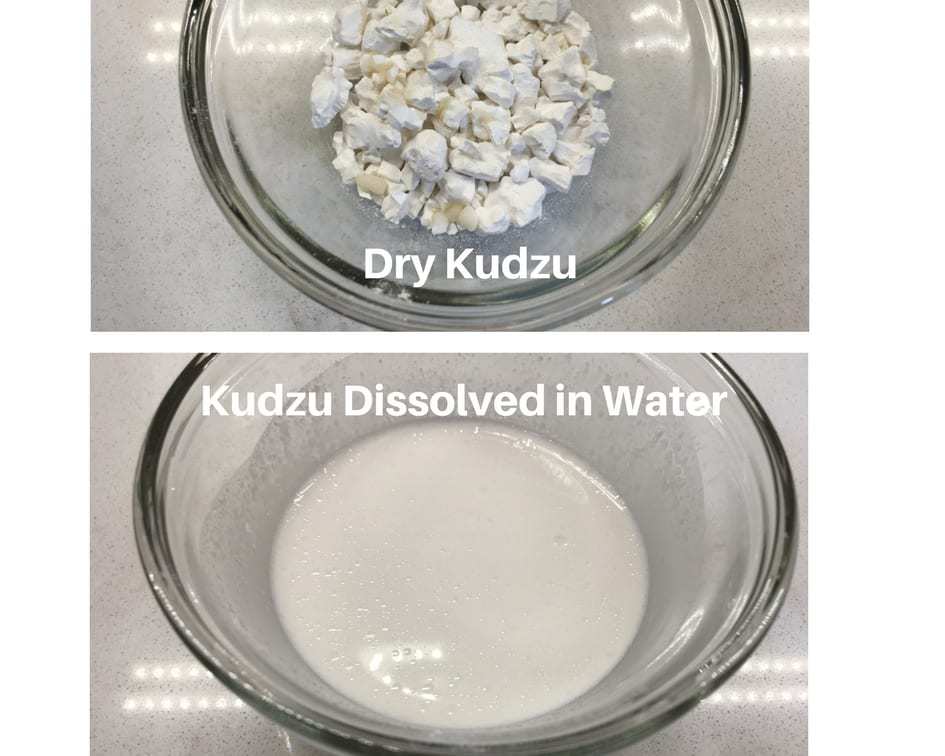 Kudzu Root (also spelled Kuzu)
Kudzu Root (also spelled Kuzu)
Why It’s Worth the Search
- Kudzu is food thickener and offers an unprocessed alternative to cornstarch
- Kudzu is a source of therapeutic isoflavones – a phytonutrient with anti-cancer, hormone regulations, and cardio-protective properties
- Kudzu is used in traditional Asian medicine to heal the digestive tract (and to discourage alcohol consumption)
Kudzu root comes in small blocks that dissolve easily in a water.
- Dissolved kudzu (2 tablespoons kudzu to 1 tablespoon water) can be added to any dish as a thickening agent.
- CARE members, Step 3: Leafy & Tender Veggies Meal Plan introduces kudzu in the “Fastest Stir-Fry” recipe to create the veggie glaze.
- I also use kudzu to thicken the sauce in my Sautéed Leek Green recipe
- Dissolved kudzu can also be diluted with miso broth or stock and sipped to settle an upset stomach (traditionally used in Asia to combat hangovers though not proven to help).

Therapeutic Use of Whole Foods
I was first introduced to kudzu root during my Therapeutic Use of Whole Foods class in graduate school at Bastyr University. Kudzu was introduced to us for it’s healing and soothing properties to the digestive system with a secondary benefit of being an incredible thickener in cooking.
After I began using kudzu with more my clients after graduation, I also learned that it is high in isoflavones; these are the same phytonutrients found in whole food sources of soy (like edamame and natto) and flax that have anti-cancer, hormone regulating and cardio-protective properties. Traditional Chinese Medicine uses kudzu root extensively and kudzu’s isoflavone content (both in the root and vine) has grabbed the attention of researchers.
Kudzu, with its many therapeutic properties, makes a wonderful alternative to cornstarch and arrowroot for thickening.
Kudzu root is another example of ingredients with purpose: food as medicine.
Where to Find Kudzu Root
You will find kudzu in the Asian section of many stores; you can try asking department managers to carry it if your store doesn’t; if you still can’t find, I recommend buying it online (retailers like Amazon and VitaCost carry it).
And a tidbit for your next game of trivia: Kudzu root grows fast and furiously in the southern US (first introduced to combat soil erosion). Yet despite its benefits both nutritionally and as a starch in cooking, it’s considered a weed and nuisance so we are left to import it from Asia.
Warmly,



Are there any benefits to arrowroot? Just curious.
Hi Diane, the real benefit to arrowroot is that it is less processed than cornstarch. It’s easier to extract the starch from the roots of the plants that arrowroot comes from than it is to extract the starch from kernels of corn. Arrowroot is also easier to digest for anyone with a sensitivity to corn making it a good alternative for those individuals. There are trace amounts of calcium in arrowroot but much too small to be considered a good source. The continuum I put these thickeners on is: (best) Kudzu —> Arrowroot —> Cornstarch. Good question, thanks for asking!